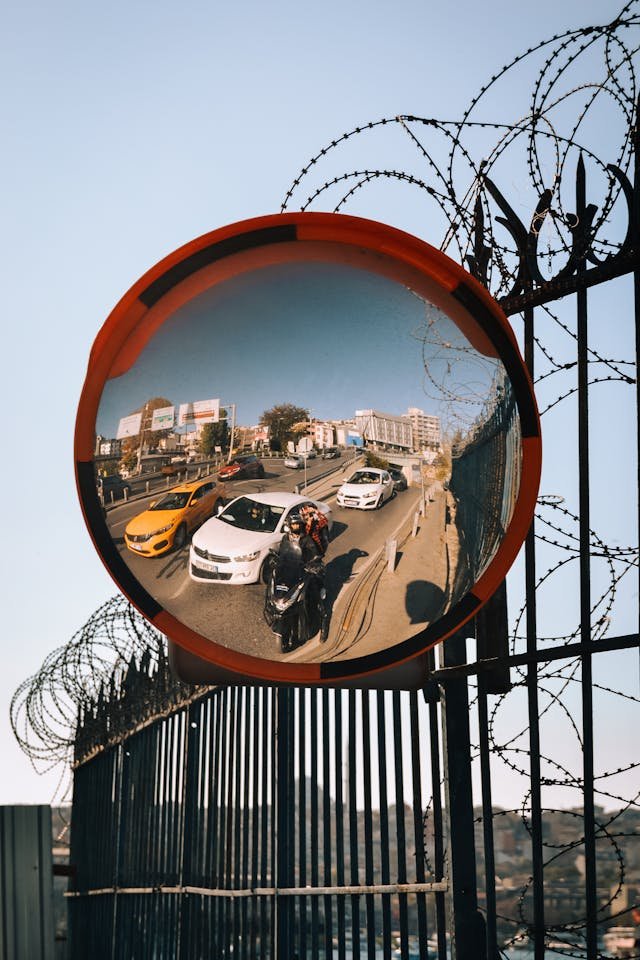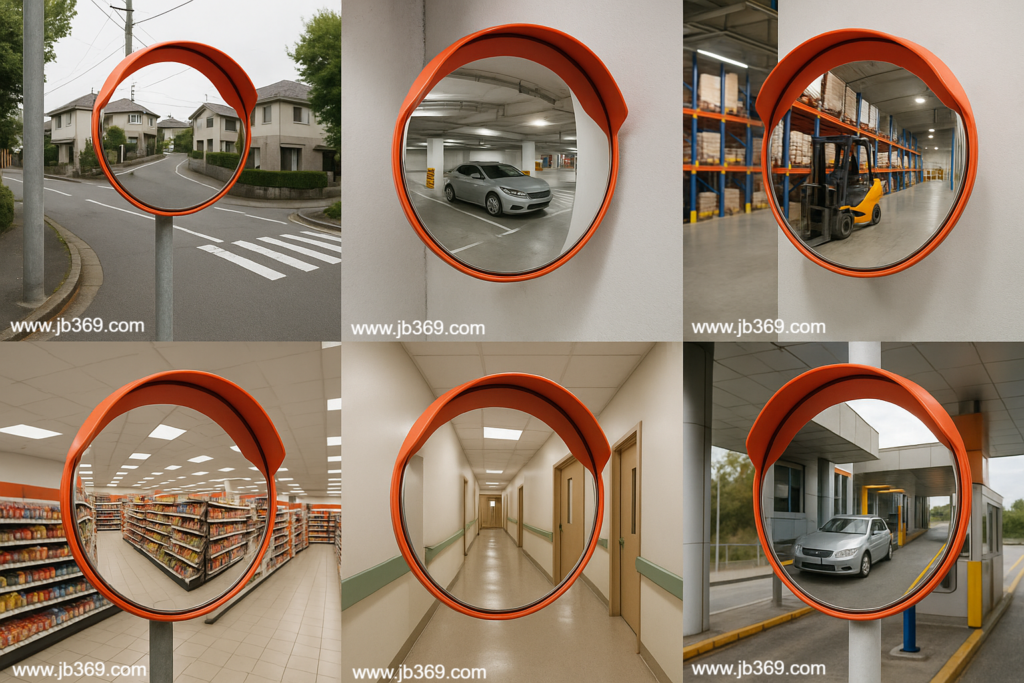Urban environments present complex challenges in traffic management due to high vehicle density, unpredictable pedestrian activity, limited road space, and numerous visual obstructions. To mitigate risks and enhance visibility in tight or dangerous locations, road convex mirrors—also known as traffic mirrors or safety mirrors—have become an essential component of urban road safety infrastructure.
For municipal authorities, contractors, traffic equipment distributors, and infrastructure development companies, understanding how and where to install convex mirrors in cityscapes can directly contribute to reducing accidents, improving vehicle flow, and promoting pedestrian safety. This guide covers the key considerations, step-by-step processes, and best practices involved in installing road convex mirrors in urban settings, while focusing on product selection, installation standards, and long-term maintenance.
Why Urban Areas Need Convex Traffic Mirrors
Convex traffic mirrors are specifically designed to eliminate blind spots and provide drivers and pedestrians with a wider field of vision. In cities, where intersections, alleyways, and tight parking zones are common, these mirrors offer immediate and passive visual coverage—no electricity or software required.
Typical urban use cases include:
- Tight T-intersections where buildings obstruct visibility
- Exit points from underground or covered parking garages
- Driveways and alleys where vehicles must merge into busy roads
- Sharp curves with limited driver sight distance
- School zones and pedestrian-heavy neighborhoods
By widening the viewing angle through a curved reflective surface, these mirrors enable safer decision-making at critical decision points, both for drivers and for pedestrians.
Step-by-Step Guide to Urban Convex Mirror Installation
- Site Assessment and Survey
The first step in mirror installation is a thorough site assessment. Urban installations often involve space limitations, pedestrian activity, and nearby architectural features.
Key aspects to evaluate include:
- Direction of traffic and line of sight
- Distance from the viewing point to the potential mirror position
- Existing signage or poles that may interfere with mirror placement
- Ambient lighting conditions (especially for nighttime visibility)
- Obstructions such as trees, walls, or advertising boards
Working with local traffic engineers or urban planners is ideal for securing approvals and ensuring that installations meet local traffic safety regulations.
- Mirror Selection Based on Urban Use Case
Traffic convex mirrors come in various diameters, materials, and mounting configurations. Choosing the correct type is critical for optimal function in city environments.
Common specifications:
- Size: 45cm (small intersections or alleys), 60cm (driveways or parking exits), 80–100cm (major junctions or wide roads)
- Material: Polycarbonate lenses are ideal for cities due to their high-impact resistance, while acrylic is cost-effective for less busy locations
- Frame: ABS or powder-coated metal for weather resistance
- Mounting: Wall-mounted or pole-mounted with adjustable swivel brackets for fine-tuned angling
Urban installations benefit from anti-glare coatings and UV resistance to maintain visibility and durability over time.
- Choosing the Correct Mounting Hardware
Depending on the installation site, you may need:
- Wall brackets (for installation on building façades)
- Clamp-on pole brackets (for existing poles or street signs)
- Ground-anchored poles (for custom positioning)
Ensure that all mounting hardware is rust-resistant and adjustable. Urban weather conditions—rain, UV exposure, and pollution—demand robust fixtures that can last for years.
For B2B suppliers and project contractors, providing a full hardware kit with each mirror enhances value and installation convenience.
- Ideal Mounting Height and Angle
The mounting height should ensure clear visibility for all vehicle types, from cars to small delivery vans. Recommended guidelines:
- Residential or alleyway installations: 1.8 to 2.2 meters above ground
- Commercial or urban street use: 2.5 to 3.0 meters, especially near pedestrian pathways
- Parking exit mirrors: Positioned to give a direct view of the sidewalk and traffic lane
The mirror should be angled to reflect the oncoming direction of traffic or pedestrian flow clearly to the driver. Installers should test the angle by sitting in a vehicle or standing in pedestrian zones to verify visibility.
- Safety and Regulatory Compliance
In many cities, road safety mirrors are considered part of passive traffic control devices and are regulated under local urban development codes or transportation authority guidelines.
Importantly:
- The convex mirror must not create glare that can distract drivers
- It must not obstruct existing signage or cause confusion with traffic signals
- Installation may require municipal approval, particularly in heritage or residential zones
B2B distributors should provide clients with technical data sheets, installation manuals, and compliance certifications (CE, EN166, ISO9001) to streamline the approval process.
- Maintenance and Longevity in Urban Environments
Once installed, convex mirrors require minimal maintenance, but urban pollution, vandalism, and environmental exposure can affect their clarity.
Recommended maintenance:
- Monthly cleaning with a non-abrasive cloth and mild detergent
- Regular inspection for cracks, warping, or misalignment
- Re-tightening of mounting brackets every 6–12 months
- Replacement of damaged or fogged lenses when necessary
Offering anti-scratch, anti-fog, and graffiti-resistant lens coatings is a valuable upsell for suppliers targeting city contracts or high-density zones.

Urban-Specific Use Cases for Road Convex Mirrors
a) Parking Garage Entrances and Exits
Convex traffic mirrors installed at underground parking exits help drivers see approaching vehicles and pedestrians. In dense areas with sidewalk traffic, this reduces accident risk significantly.
b) Commercial Loading Bays
Urban storefronts and service entrances often open into narrow streets or pedestrian paths. Mirrors installed at building corners improve visibility for both delivery personnel and street traffic.
c) Crosswalk Adjacency in School Zones
At school intersections where crosswalks are hidden behind parked vehicles or landscaping, mirrors enable both drivers and children to see oncoming hazards more clearly.
d) Traffic Circles and Small Roundabouts
In compact roundabouts with obstructed views, convex mirrors provide a real-time reflection of traffic inside the circle, helping prevent misjudged entries.
e) Bicycle Paths and Multi-use Corridors
With the rise of cycling in cities, blind corners at bike paths can be dangerous. Installing mirrors at crossing points and sharp turns enhances cyclist and pedestrian safety.

Advantages for Distributors and Municipal Contractors
For B2B suppliers and public works contractors, road convex mirrors represent a growing opportunity. Urban expansion, smart city initiatives, and increased road safety funding make these products vital tools in modern city planning.
Key advantages include:
- Easy logistics: Lightweight, stackable, and non-electric
- High ROI: Low-cost items with long service life and immediate safety value
- Wide application: Suitable for city councils, transport departments, construction firms, and property developers
- Brandability: White-label or OEM options allow for custom branding and client loyalty
Conclusion
Convex traffic mirrors play a vital role in making urban roads safer and more efficient. From blind driveways to busy intersections, these mirrors offer real-time visual coverage without the cost and complexity of high-tech alternatives. By understanding the strategic considerations for installation, mirror specifications, and regulatory compliance, B2B buyers, city contractors, and traffic infrastructure providers can deploy these solutions with confidence.
As cities continue to grow and prioritize safety, road convex mirrors will remain a crucial component of urban traffic management systems.
Looking for a custom convex mirror manufacturer or supplier? Struggling to find the right factory to bring your vision to life? We’ve got you covered! At our place, we craft top-quality convex mirrors with precision and care. Big or small, your needs are our mission. Let’s launch your mirror project and take your product line to the next level! Click here to contact
